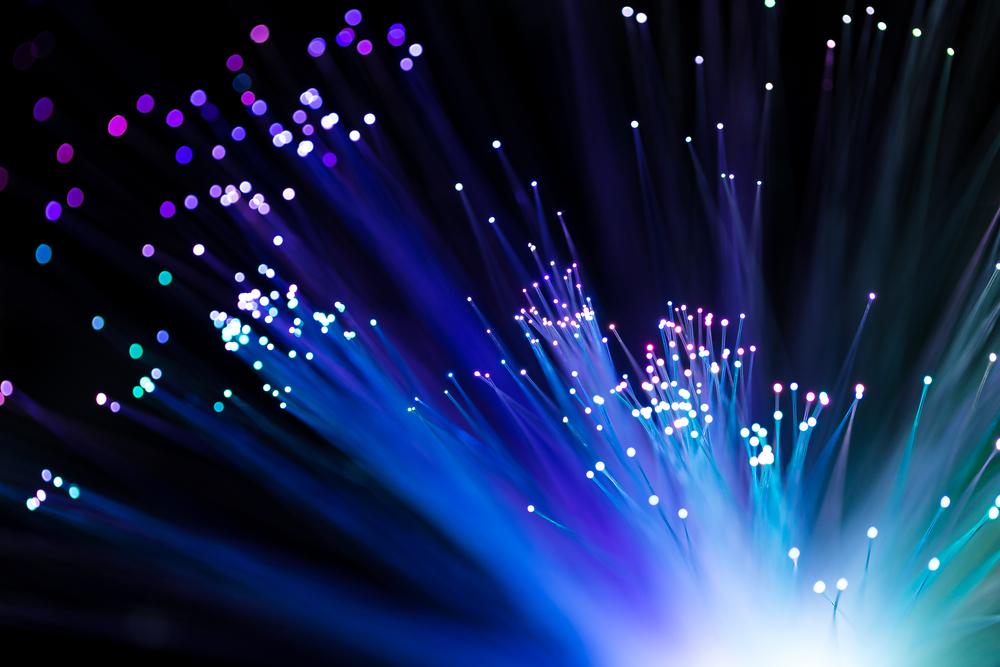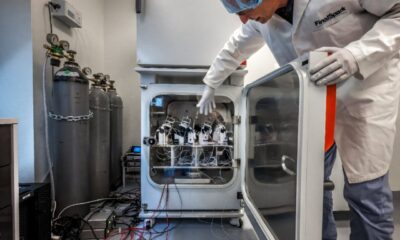Inovation
Revolutionizing Connectivity: Advancements in AI Chip Technology for Fibre Optic Networks

Fraunhofer IIS Innovates AI Chips for Enhanced Fiber Optic Networks
In a bid to revolutionize signal quality and data transmission rates in fiber optic networks, Fraunhofer IIS is spearheading the development of AI chips based on spiking neural networks.
The groundbreaking project, known as SpikeHERO, is aimed at bolstering Europe’s digital infrastructure and securing its technological independence through advanced fiber optics.
Collaborating with partners from the Netherlands, the Czech Republic, and Belgium, the Institute is at the forefront of this transformative endeavor.
Significance of Fiber Optic Networks in the Digital Era
Fiber optic networks serve as the backbone of our digital future, where the demand for higher bandwidths and lower latencies continues to escalate as industries vie for cutting-edge technologies.
The forthcoming 6G networks, in particular, are mandated to meet exceedingly high data transmission demands.
The prevailing challenge lies in the degradation of signal quality as data rates surge. To counteract interference, current providers resort to digital signal processors, albeit at high costs and unsustainable power consumption levels.
Michael Rothe, the Embedded AI group manager at Fraunhofer IIS, elucidated, “Further enhancements in fiber optic data rates are hampered by technical constraints.”
Surmounting Obstacles with Neural Networks
The SpikeHERO initiative is striving to transcend the technical barriers in fiber optics.
The project partners are crafting a pioneering AI processor architecture that melds an optical and an electrical spiking neural network chip.
These neural networks will continually monitor the communication channel, scrutinize signals, and rectify any interference at the receiver through control parameters. By upholding signal quality, new avenues emerge for amplifying data rates in fiber optic systems.
Specifically, the project aims to triple the bandwidth from 10 GHz to 30 GHz, slash latency from 10 microseconds to under 6 nanoseconds, and reduce energy consumption from 7-10 watts to a mere 1-2 watts.
Brain-Inspired Innovation
Spiking neural networks (SNNs) represent a promising leap in artificial intelligence.
Their operational modus mirrors the principles of the human brain, processing information in pulses only when surpassing a critical relevance threshold. This renders SNNs ideal for AI applications necessitating real-time responsiveness and energy efficiency.
Diverse methodologies exist for developing SNN chip hardware, with optical semiconductors transmitting spikes via photons and electrical counterparts utilizing voltage and current.
Each variant harbors distinct advantages, and SpikeHERO aspires to amalgamate both. For the electrical SNN chip, the project will leverage the SENNA chip devised by Fraunhofer IIS and Fraunhofer EMFT.
“We are presently refining the second generation, promising higher spike rates with diminished energy consumption,” remarked Rothe.
-

 Facebook4 days ago
Facebook4 days agoWarning: Facebook Creators Face Monetization Loss for Stealing and Reposting Videos
-

 Facebook5 days ago
Facebook5 days agoInstaDub: Meta’s AI Translation Tool for Instagram Videos
-

 Facebook5 days ago
Facebook5 days agoFacebook Compliance: ICE-tracking Page Removed After US Government Intervention
-

 Facebook5 days ago
Facebook5 days agoBreaking Updates: Meta Connect 2025 Unveils Latest Developments
-

 Video Games5 days ago
Video Games5 days agoGoku Takes on the Dragon Ball FighterZ Arena
-

 Cars4 days ago
Cars4 days agoRevving into the Future: Ferrari’s Plan to Unleash 20 New Models, Including Electric Vehicles, by 2030
-

 Video Games6 days ago
Video Games6 days agoTekken 8: Rise of the Shadows
-

 Amazon6 days ago
Amazon6 days agoNeil Young Takes a Stand: Pulling Music from Amazon in Protest of Jeff Bezos’ Support for Trump































